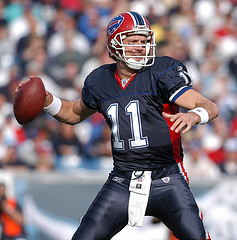I am an unapologetic fan of violent, contact sports. I have wonderful memories of being a participant in violent, contact sports. On the rugby teams I played for, I was usually the guy tasked with bringing both the violence and the contact to the other team. These sports are fun to play. They are fun to watch. But, predictably, that violence takes a toll on the human body.
The recent murder of Kasandra Perkins and subsequent suicide of her killer, NFL player Jovan Belcher has focused new attention on the risk of violent behavior/suicide in these athletes. So much so that Major League Baseball is reportedly working on a program to help identify troubled athletes and get them help before things go really wrong. This sounds like a good thing (provided it is executed well), but wait…did you say MLB? As in baseball?
Yes, baseball. I was surprised to learn from Chris Mortensen’s report, that there also appears to be an unusually large number of suicides among current and former professional baseball players. I cannot find all the numbers one would need to confirm that the NFL and MLB suicide rates are truly exceptional, but both sports seem concerned.
I am not an entirely disinterested party. While I never received a concussion playing football, I have had two concussions while playing rugby. Once in college due to an illegal hit and once in graduate school due to an awkward tackle that was my own fault (don’t head butt a guy’s knee, kids). I was lucky that I had no post-concussion issues and was not pressured to play again until I was ready. I look forward to getting old having to worry about the wear and tear on other pieces of my body than my brain.
It is certainly true that a professional football career does significant, long term, physical damage to players. Watch any Football Hall of Fame induction. It is hard to argue that those guys aged well. It is, however, hard to think of any more serious result from playing football than long term effects of brain damage.
I am skeptical that most of us would care about the physical and mental abilities of former NFL players declining at an accelerated rate without the headline grabbing suicides*. We can hide the old and infirm in homes or behind nursemaids. You cannot hide Junior Seau shooting himself in the chest. Connecting the dots between a faster/more physical modern football, hits to the head, and suicides makes a neat, simple narrative.
The suicides of MLB players suggests that the suicides of NFL players may be about more than just hits to the head. On its face, suicides by baseball players is not consistent with the simple narrative of head injuries leading to behavioral changes leading to suicide or violence.
I’m not putting my experience on the same scale as these professional athletes, but I have had to cope with the weird emotional ups and downs of intense, physical competition. Our society does not prepare us well for the transition from the intensity of hitting another person as hard as you can to the tedium of picking up the dry cleaning.
This is not to minimize the problem, though it does complicate it. If what these athletes need is help coping with their unusual, competitive lifestyle (intense competition, training, and adulation, punctuated by boredom) or transitioning to a “normal” life, then all the fines for hit to the head and CT scans in the world won’t solve the problem. My guess is that they need all of the above.
*I’m also skeptical that we would have heard much about these in years before the 24/7 focus on the sporting world provided by networks like ESPN.


